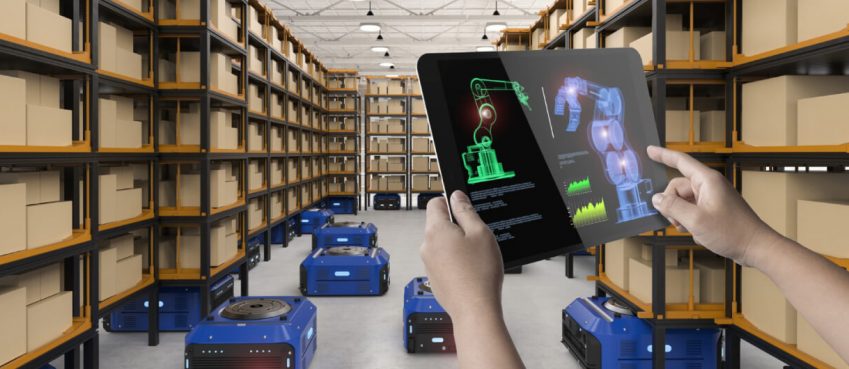
All industries are facing a period of disruption, and logistics companies are faced with the competition of new, intelligent business systems that have come to change the game. Innovative organizations are taking up market share, reducing costs, and offering more end-to-end value.
It is time to move away from the traditional approach and invest in a strategy that is new, efficient, and effective.
There are three key aspects of the transformation currently taking place in the logistics and supply chain industry. Firstly, developing new business models and proposals, secondly digitizing key operations, and finally building a strong internal digital base.
No-Code platforms, combined with technologies like AI, Blockchain, and IoT, are helping businesses achieve these objectives.
No-Code platforms are enabling citizen developers in these organizations to digitize and digitalize the business, removing the need for more talent that is not already a part of the organizational processes.
Let us learn how.
Internal digital foundations in this hyperconnected world
In a recent Industry 4.0 survey from Deloitte, 62% of all organizations cited their supply chains as their top priority in digital investment.
No-Code Digital Process Automation is helping businesses in the supply chain and logistics industry automate their processes, and seamlessly integrate them with any 3rd party systems. Here are a few examples of how the industry is benefiting:
1. Data integrity and networks
Some of your information is shared via email, others on Google Drive, Dropbox, Sharepoint, or something else, and let’s not forget all the work that still happens on paper and is still stuck in its original file.
No-code in supply chain and logistics can help with everything from digitizing and streamlining, to combining and then analyzing data intelligently.
This increases transparency and business understanding due to ease of access to relevant information all on one platform. Logistics organizations have enough procurement and delivery channels. No-Code can help remove the extra ones in data handling and communication.
2. A solution for ever business need
Each department has a different set of needs; IT, finance, purchasing, inventory, and more. No-code helps citizen developers in each of these teams, who are already acquainted with the need, use inbuilt drag and drop features to automate their processes and create the business software required to make their life easier.
For example, sales can build a CRM, and procurement could build a system that sets off alarms whenever supplies run low.
Using no-code platforms, the business teams can fulfill their needs without waiting for the IT team. Thus, working to improve organizational agility.
3. Intelligence
While automation in terms of forklifts and other production line productivity tools has been evolving for decades, the same intelligence has taken its time to be applied to the back end workspaces where there are less time and room for error.
No-code for supply chain and logistics has bridged that gap. It allows for analysis of what is going on as a method to see what needs to change.
For example, the supervisory body for the no-code system of an organization can be the IT, who keep an eye on usage trends and their effectiveness.
Overall, the organization can easily view that data and identify areas with a need for automation; through applications or digital process tools. These analyses created by no-code for tools could help improve efficiency and worker safety.
This also provides more predictability, structure, and usability around data to make business processes run faster and smarter.
Also read: How To Download YouTube Videos Without Watermark? 15+ Apps and Websites Mentioned (Online & Free)
Case examples
1. Quixy and the Cochin Port
While there are hundreds of examples of how this has helped organizations, you can read more about how a no-code solution provider, Quixy, helped the Cochin Port automate the container freight station processes and reduce cargo dwell time by about 25%.
This is a space where each minute lost leads to money loss, and to be cut by a quarter by simple no-code automation and integration is unbelievable.
2. K2 Solutions and ZF Lenksysteme
No-Code DPA solutions have a huge impact on organizations who have to maintain multiple processes simultaneously, something that is normal in the supply chain industry.
For ZF Lenksysteme, this meant integrating accounts, finance, operations, manufacturing, and more to ensure that all workflows are streamlined.
This proved that no-code for supply chain and logistics helps connect systems across countries and continents with ease.
3. Outsystems and Islandwide
Islandwide is Puerto Rico’s biggest logistics supplier. While highly successful they noticed constant issues in terms of the applications that helped control the processes.
With an IT team of 4, no-code was the way to go. With e-commerce adoption and logistics streamlining, Islandwide took off. Their efficiency has picked up manifold.
Also read: How to choose The Perfect Domain Name
Final ideas of how no-code for supply chain and logistics can alter the future
Whether it is material and inventory management, procurement management, warehouse and fulfillment, distribution management, or returns & repairs, no-code can help you automate and streamline all your logistics and supply chain processes to drive productivity and efficiency while delivering true value to the customers.
These are some possibilities and ideas that do not even graze the iceberg of what no-code for supply chain and logistics has in store for all parts of the business. It has unlimited, constantly upgrading potential that is here for you and your business.
Top 10 News
-
01
Top 10 Deep Learning Multimodal Models & Their Uses
Tuesday August 12, 2025
-
02
10 Google AI Mode Facts That Every SEOs Should Know (And Wha...
Friday July 4, 2025
-
03
Top 10 visionOS 26 Features & Announcement (With Video)
Thursday June 12, 2025
-
04
Top 10 Veo 3 AI Video Generators in 2025 (Compared & Te...
Tuesday June 10, 2025
-
05
Top 10 AI GPUs That Can Increase Work Productivity By 30% (W...
Wednesday May 28, 2025
-
06
[10 BEST] AI Influencer Generator Apps Trending Right Now
Monday March 17, 2025
-
07
The 10 Best Companies Providing Electric Fencing For Busines...
Tuesday March 11, 2025
-
08
Top 10 Social Security Fairness Act Benefits In 2025
Wednesday March 5, 2025
-
09
Top 10 AI Infrastructure Companies In The World
Tuesday February 11, 2025
-
10
What Are Top 10 Blood Thinners To Minimize Heart Disease?
Wednesday January 22, 2025







